Beyond Cancun: Isla Holbox and Rio Lagartos
Here at Destinations, we’re conscious that places aren’t experienced in isolation: it’s about the journey, too. In the second of a four-part series exploring Mexico’s Yucatan Peninsula, we come face to face with wildlife big and small on Isla Holbox and in Rio Lagartos.

Night closes in as I turn off the main highway connecting Cancun and Merida toward the port town of Chiquila, on the northern coast of Mexico’s Yucatan Peninsula. I am racing to make the last ferry to the by-all-accounts quaint Isla Holbox, but visibility — or lack thereof — holds me back. I slow right down, letting braver souls whizz past me on the single unmarked, unlit road leading to the coast. Pulling up at the small ticket stand at 9:30pm, I am seconds too late, as the ferry pulls out of the harbour. Disaster.
After a short negotiation, however, I’m on my own private ‘ferry’, an 8-seater operated by one of the local fishermen. It’s almost ten times the price of a regular ferry ticket, but even at 700 pesos doesn’t break the bank. Under bright stars we breeze our way over the inky water, the shadow of the island visible on the horizon. Docking at the Holbox pier, it’s a short wait for one of the many golf cart taxis, the primary form of motorised transport on the island, where paved roads are yet to take over.
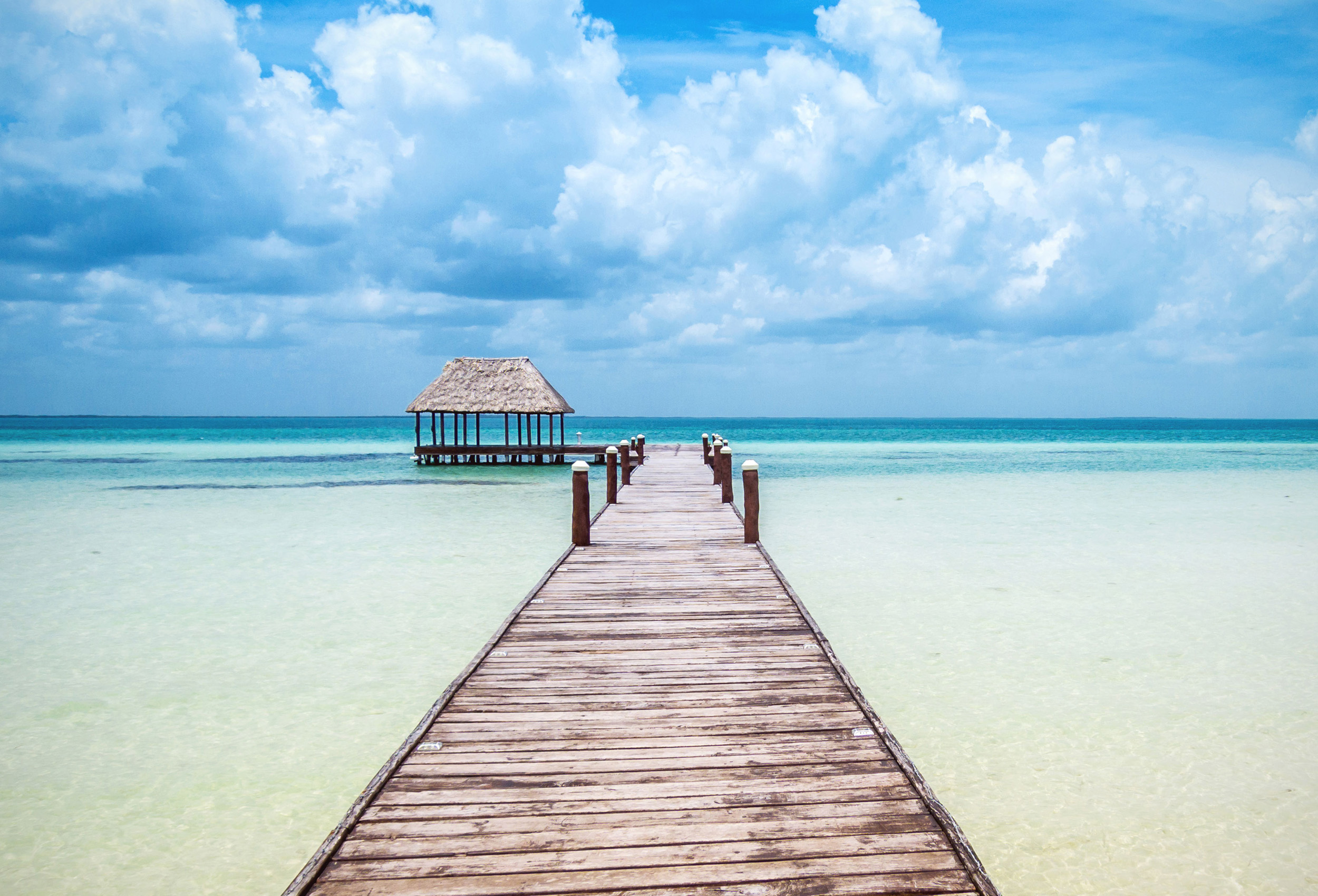
Although it’s late, the main street, lined with restaurants and bars, is lively: were I not wiped out already, it would be tempting to stop right here. We carry on, parallel to the ocean, and I’m soon dropped at the door of my B&B, the simple but charming Casa Blatha. I’ll discover in the light of day that this is a thin, white stucco and bamboo pole structure, with incredible views across the sparsely-populated island and the jade sea just metres away. For now, I fall gratefully into the traditional bed suspended from the ceiling.
Walking back into the town centre the following morning, I’m struck by the quiet. Leaves rustle, golf carts putter, birds chirp, and the occasional snatch of conversation drifts by. Both roads and beach are soft white sand. A convoy of taxis comes past: well, they’re black and yellow, and on four wheels, but that’s where their similarity to the taxis I know ends. A group of horses, available for riding, stands tied to a tree in the shade. Beachfront resorts are spaced out along the shoreline kept in place by sandbags.
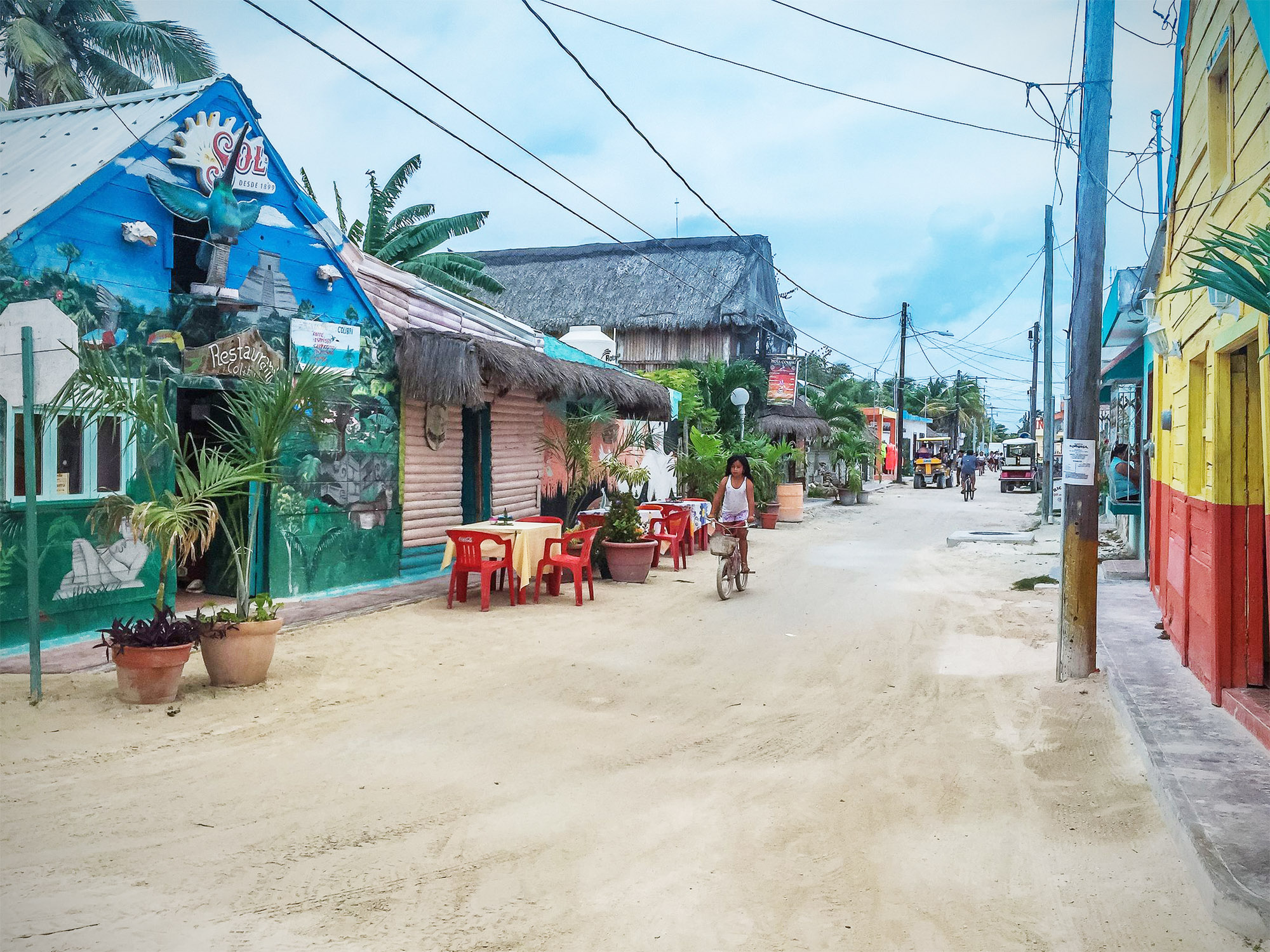
Reaching the town, sidewalks in faded pink and orange line streets of churned dried mud, evidence of the recent rain. After a perfectly-executed Spanish omelette and iced Americano at La Tortilleria, I move just a few steps down the street to Rosa Mexicano, drawn in by its fun swing seats, and kept around by a solid selection of beers and cocktails. A sign declares, ‘Sorry, no Wi-Fi: talk to each other and drink’. Lacquered tree trunks reach out of the ground to support the structure, and despite its main street location, it’s like sitting on a beachy deck area, the tables out front roped off and offering a chance to drink and dine with feet in the sand. Furniture is crafted of pallets and crates, and lightbulbs dangle from the ceiling.
I begin with a fresh cucumber and coriander mojito, then move on to a watermelon martini, with potent chunks of fruit soaked in vodka. As I sip, the tour office across the street — one of many offering the ubiquitous whale shark experience — is replastered before my eyes, a reminder that despite the kitsch hand-painted signs and rustic chic, this is an ever-evolving place.
A recurring motif is the street dogs: a common fixture in less ‘developed’ nations across the world, those on Holbox are particularly characterful. I meet a Great Dane almost as tall as the golf carts and bicycles that make up the rest of the traffic; one eye brown, the other blue — both of us freely roaming the town. At the other end of the scale, a tiny chihuahua hits the stores and a bloodhound takes a stroll. There’s a white poodle, a papillon, and a sausage dog. One rides by on the front of a motorcycle with a rare human chaperone. Some have owners, some don’t — but all seem well taken care of. Asking around, I learn that many of the dogs are ‘adopted’ by local businesses.
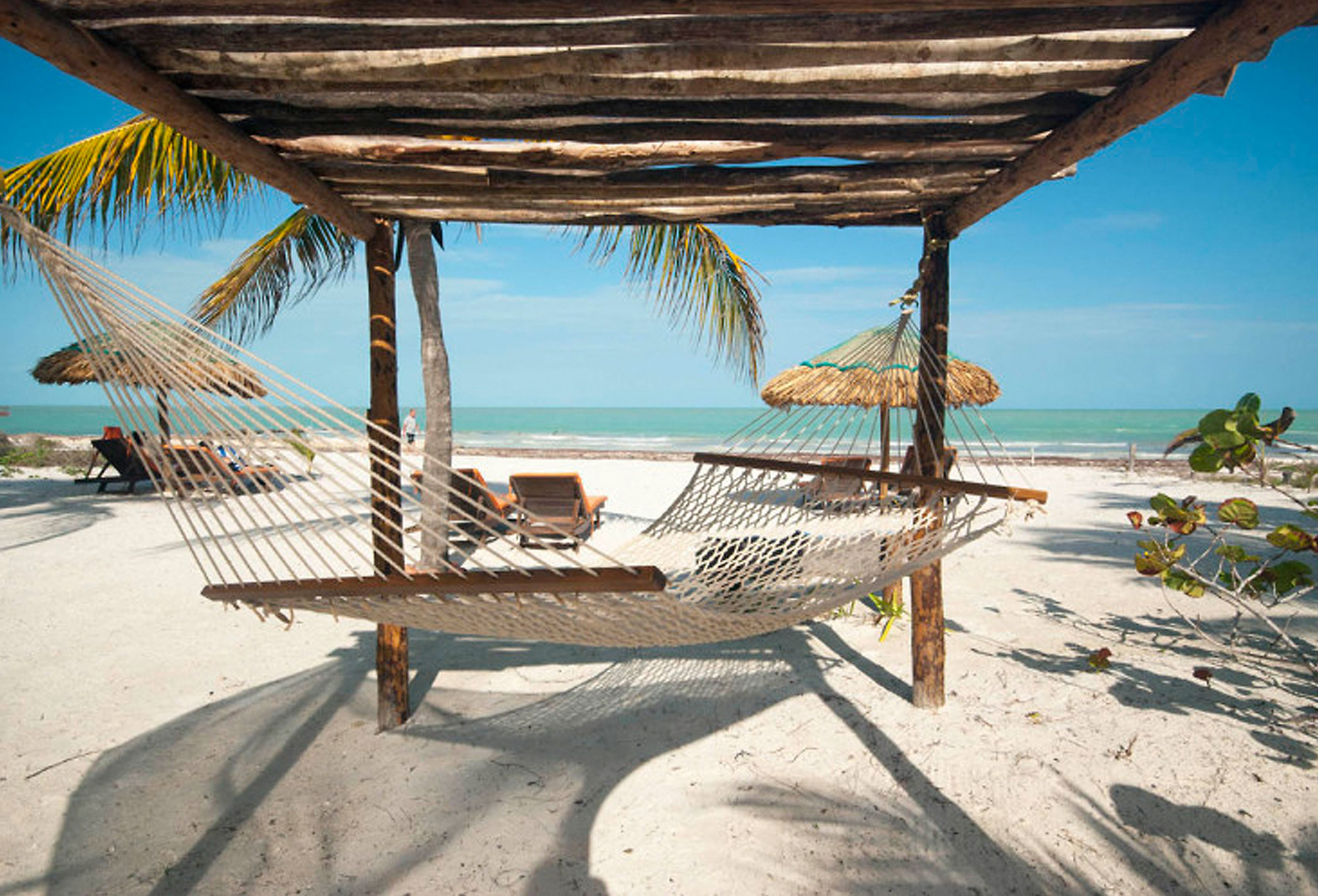
At sunset, the beach is the place to be, its white sand illuminated blue. A bird swoops into water to catch a snack, people congregate on the sandbanks and take a swim, and of course the dogs hang out too. One enterprising person takes a run as the day cools down. The bar at Hotel Zomay is a recommended spot, serving beers, cocktails, and well-worn reggae hits. International conversation swirls around as the golden sun ducks behind clouds and emerges red below.
However, not even this can distract me from my dinner plans: El Chapulim is unique amongst Holbox’s surprisingly cosmopolitan dining scene. The restaurant’s thatch roof and eclectic décor — embroidered floral placemats, blown glass lamps, and cutlery in wooden boxes — gives a homely feel. A diverse soundtrack reflects the collection of an older gentleman with good taste. My table, out on the street in the breeze, allows for great people watching. A decent-sized frog hops on by as I sample from a selection of Mexican microbrews: first a pale ale from Guanajuato, then an IPA from Chiapas.
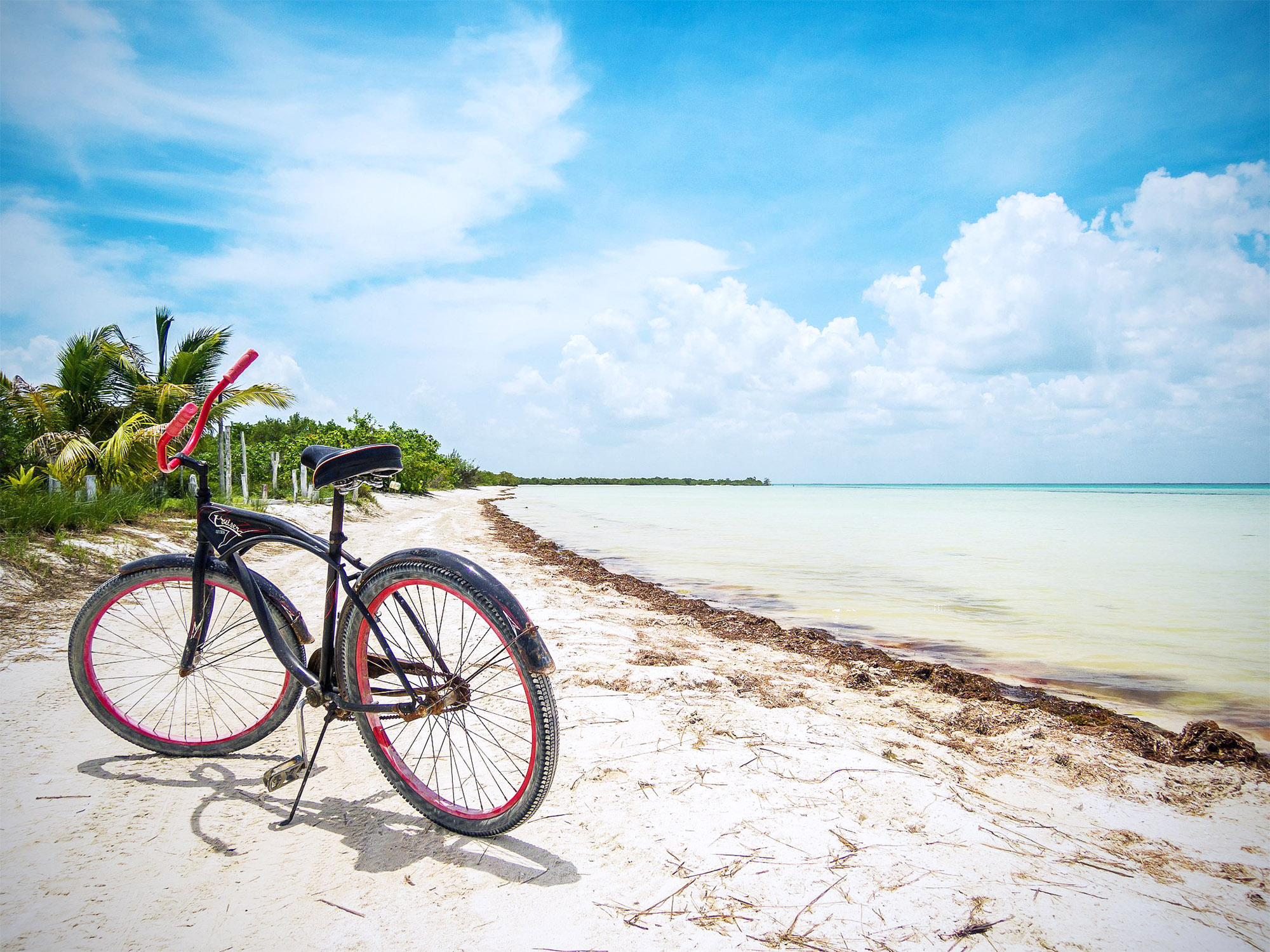
Operating without a menu, the chef gives his choices — today, it’s boneless white fish, shrimp, lobster tail or steak — and takes orders tableside. I go for the fish, tender and fresh with an asparagus, celery and chilli cream sauce, accompanied by tasty rice. A fruit salad served alongside is refreshing, but with its own herbaceous and spicy kick which elevates the meal from simply awesome to interesting. I find myself thinking back to meals that have stuck with me — traditional barbecue at Joshua Tree, or an unexpected pear and gorgonzola risotto in my hometown. Only time will tell, but perhaps this one is about to be added to that list of greatest hits.
Heading back to the beach, one bar trying a little too hard throws lights and thumping music across the sand — though it does look magical. There’s more magic in store, though. I head back down the main street to Rosa Mexicano to meet José, my guide from Holbox Bike Riders. Soon enough, we’re pedalling into the dark northwest of the island. Approaching this quieter end of the island where the stars shine bright, the sea takes on a glow as well. It’s difficult to process: it seems my eyes are playing tricks on me. However, it’s very real: what we’re seeing is the bioluminescence of millions of phytoplankton, food for the famous whale sharks. No hesitation — we all strip off and race into the water. I can feel the plankton congregating, and see the evidence as my body is outlined by light. Movement experiments ensue, then we sprint back to our piles of clothing, dodging the menacing Holbox mosquitos as best we can.
Next morning, I have an early wakeup call, for my whale shark tour departs at 7am. I’m picked up and delivered to the pier, where we wait, along with many others, for a small boat to become available. Soon, we’re bumping across the waves, internal organs being reassembled and muscles tearing from bone at every impact. Suffice to say, it’s not my favourite boat ride. Whale sharks are huge — the largest fish in the sea — but so is their habitat, so locating them takes the majority of the morning. When we finally come upon them — along with dozens of other boats — there’s a sense of relief as well as excitement.

Orderly, we take turns entering the water, timing the jump to coincide with the creature’s path. Immediately I am faced with those distinctive spots in close up, and the morning’s challenges disappear. I kick through the water, fighting a losing battle to keep up with the wide mouth and beady eyes, and a strong tail disappears into the haze. Soon, though, the many others doing the same and the obvious desire of the whale sharks not to hang around have me questioning my ethics. Regulations of the kind rigorously followed to protect Tonga’s humpback whales are noticeably absent, or disregarded here. I’m not disappointed to begin our journey back to Holbox, stopping along the way to snorkel with sea turtles below and pelicans above, and anchoring in a calm cove for some excellent ceviche with views of flamingos in the distance.
Then it’s off one boat and onto another, as I depart the island — by standard ferry this time — for Rio Lagartos, and more flamingos. I retrace my tyre tracks: my phone dead, I’m relying on memory and friendly public assistance to get me to my destination. After a couple of detours, it’s another drive into darkness as I reach the home straight. I’m happy to recognise the contemporary silhouette of Yuum Ha Boutique Hotel as I make my way around the waterfront. Rio Lagartos is a resolutely three-star town, but among a small group of dated options, Yuum Ha is unique in its styling but equally as affordable. The white rectangular structure with details of pink brick, stone and polished wood fits in with the surrounding natural and commercial environment, while standing out as the newest kid on the block.
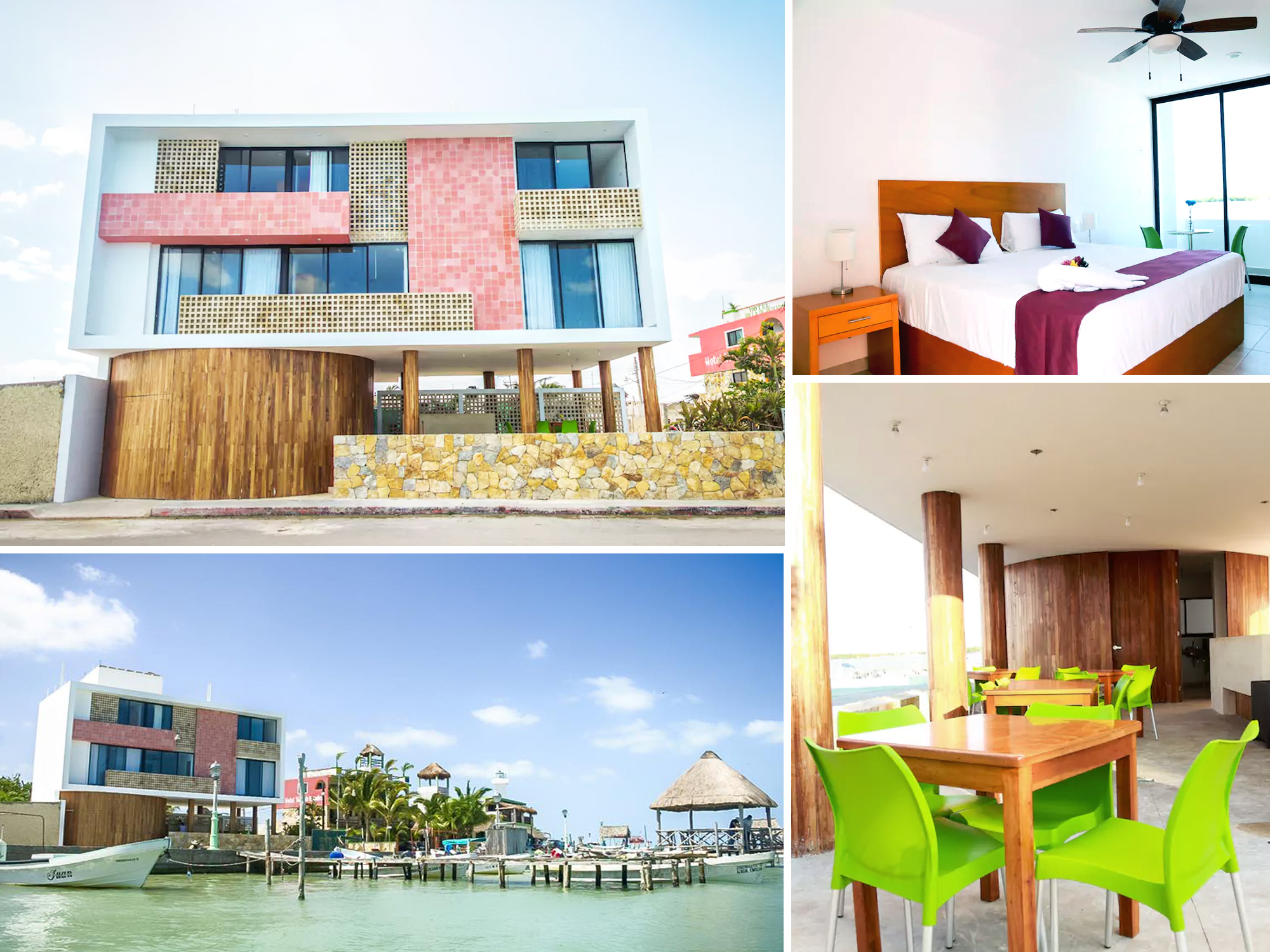
I climb the solid stone external stairwell to my room on the second floor. Smooth tiles underfoot, I relish in the strong air-conditioning, a luxury after keeping things more ‘natural’ on Holbox. The room is somewhat minimalist in design, with splashes of grape and lime punctuating white walls and linens and wooden furnishings. There’s plenty of storage space and a wall-mounted TV for those who need a little inside time. The bathroom continues the wood-and-white theme, with the addition of gorgeous small glass tiles in different shades of green, evoking the ria most visitors are here for.
The exemplary feature of the hotel is its position, maximised by ceiling-height sliding glass doors. I wake to sunrise over the mangroves, fishermen and tour guides already up and out. Stepping onto the balcony, I realise Rio Lagartos smells like a fishing village too — though not in a bad way. Despite hazy humidity, both locals and tourists take advantage of the relative cool of the early morning to get in a walk or run around the bay. Schools of tiny fish create ripples on top of the water, and birds perch on poles, occasionally ducking in to catch breakfast. A tour guide across the way waves at me, offering me a special early morning price. It’s tempting just to get going, but I’ve already made a date.
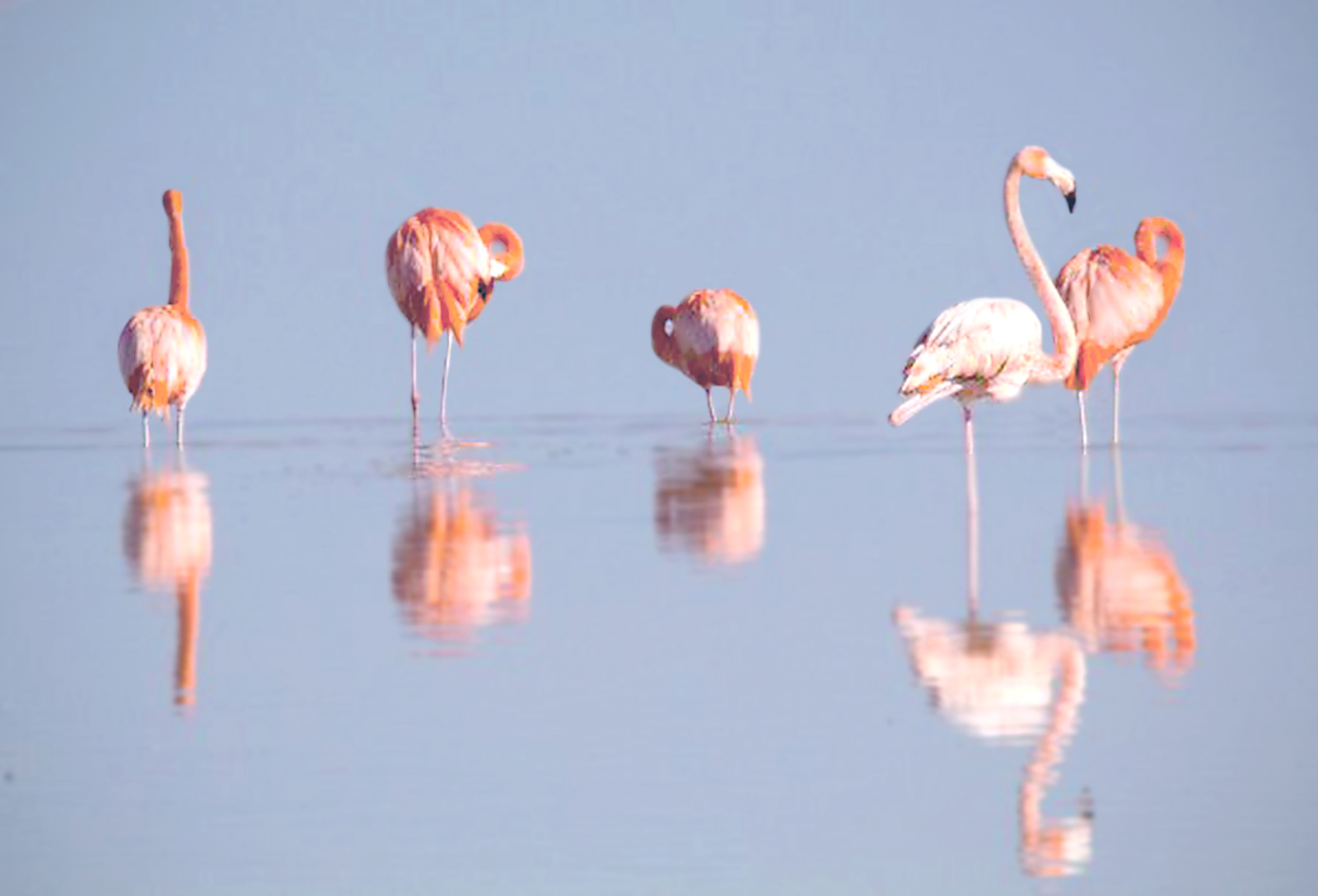
I’m collected by the jovial Chino of Rio Lagartos Ecotours, hopping on the back of his motorbike for the short ride around to Chiquila — not the town I left last night but a restaurant tucked at the eastern end of the esplanade, past cute dwellings with flamingo- and fish-themed fences. Here, I’m transferred to a six-seater boat with comfortable swivel chairs. The going rate for the entire boat is a very reasonable 900 pesos. We set out across the water, enjoying a panorama of the town, and the refreshing breeze allows me almost to forget the sunburn and mosquito bites my Holbox escapades engendered. I am grateful for the smooth, relaxing boat ride this morning.
Soon, we slow down. The motor is cut, and it’s silent — except for the occasional quack, the call and response of the flamingos I’ve missioned here to see. Speaking very little of one another’s languages, we make do with simple Español: “Muy rosa!” It’s true, the birds are all of different shades but on the whole are exceptionally pink, a result of the high level of carotenoids in their diet here. Their S-shaped necks curl to feed and look about, contorting into a figure-eight when scratching. I’m amazed to observe miraculous take-off and landing procedures, as the flamingos run across the surface of the water.
Speaking very little of one another’s languages, we make do with simple Español: “Muy rosa!”
Mission accomplished, we cut back along the waterfront and enter the mangroves, where the water is almost as green as the trees. An occasional boat is anchored along the margins, together with more flamingos, pink striking against the green. There’s a lot more traffic here: cormorants dive into the water and guard a weathered sign noting that we’re entering a protected natural area. Other birds perch on the highest branches of the mangroves, soar overhead and glide above the water’s surface, as bright green butterflies enter the mix. All navigate the environment and dodge one another as if it’s choreographed.
As we emerge into a lagoon, patches of dark and light blue join the green. We float towards the shore, disembark, and climb up onto a sandbar. On the other side, the colour of the water changes dramatically: we have reached Las Coloradas, the appropriately-named coloured lakes east of Rio Lagartos. Instagram posts abound with shots of flamingo-pink tides. Once again, plankton — this time rich in the beta carotene that has the same colourful effect on the flamingos — is the culprit of this maritime marvel. But today the shades are more murky apricot and mauve, a spectacular contrast nonetheless.
Nearby is the ‘Maya Bath’, where I coat every exposed inch in the smooth white mud lining the shore. We whizz back to Chiquila, and I rinse off there in the natural swimming hole before hopping back on the motorbike. I wash away the last of the mud in Yuum Ha’s rain shower, emerging fully rejuvenated. The morning isn’t even over, and I’ve achieved so much already — but there’s always more ahead. I head back down the stairs with far more energy than I climbed them the previous evening, and hit the road towards dream destinations Tulum and Sian Ka’an.
Don’t miss out on the rest of the ‘Beyond Cancun’ series, exploring Mexico’s Yucatan Peninsula…
Previously:
Next:
